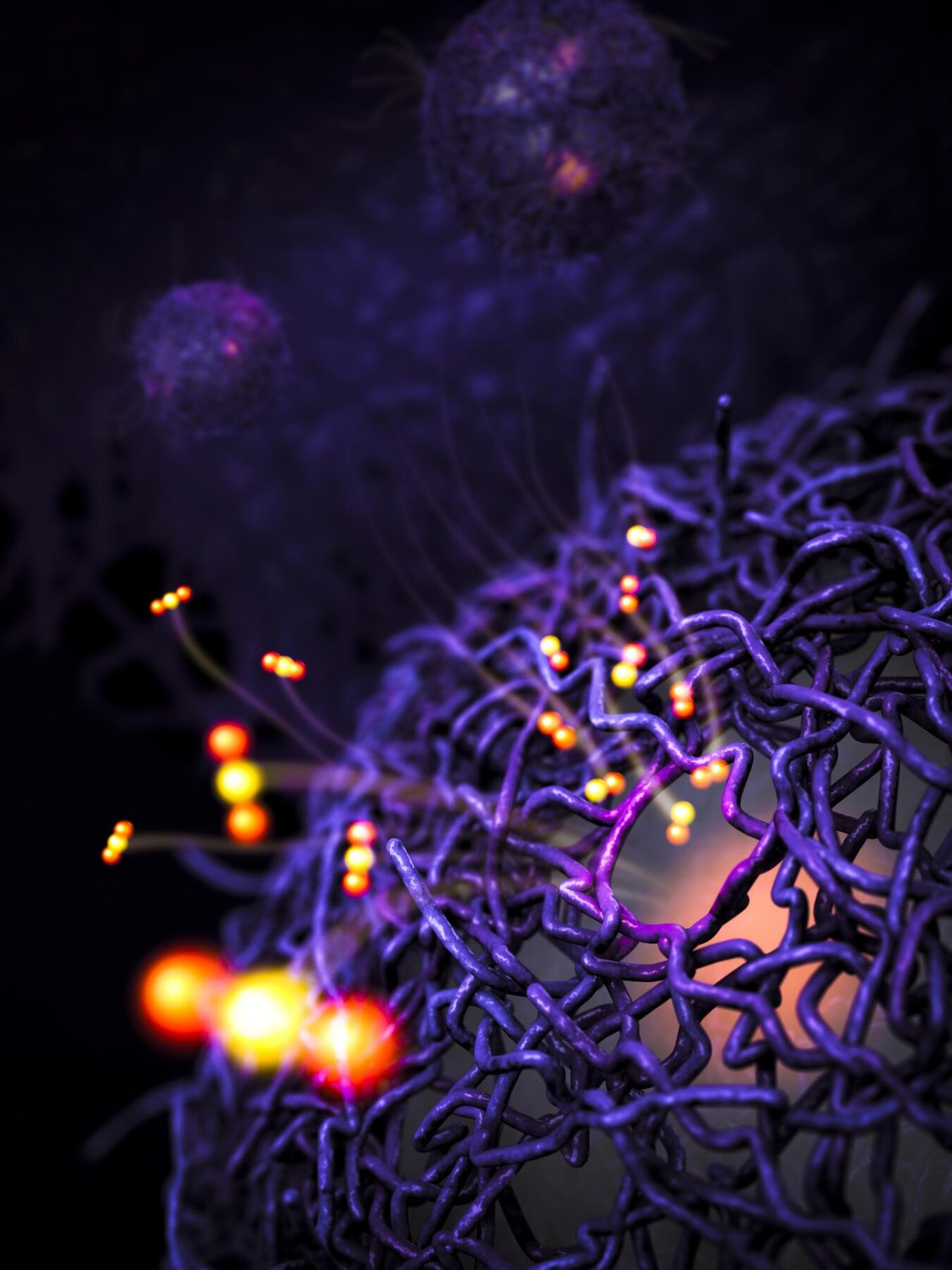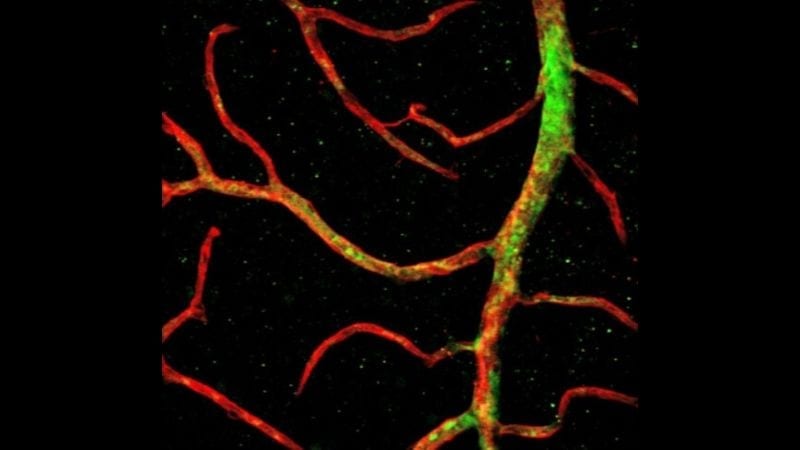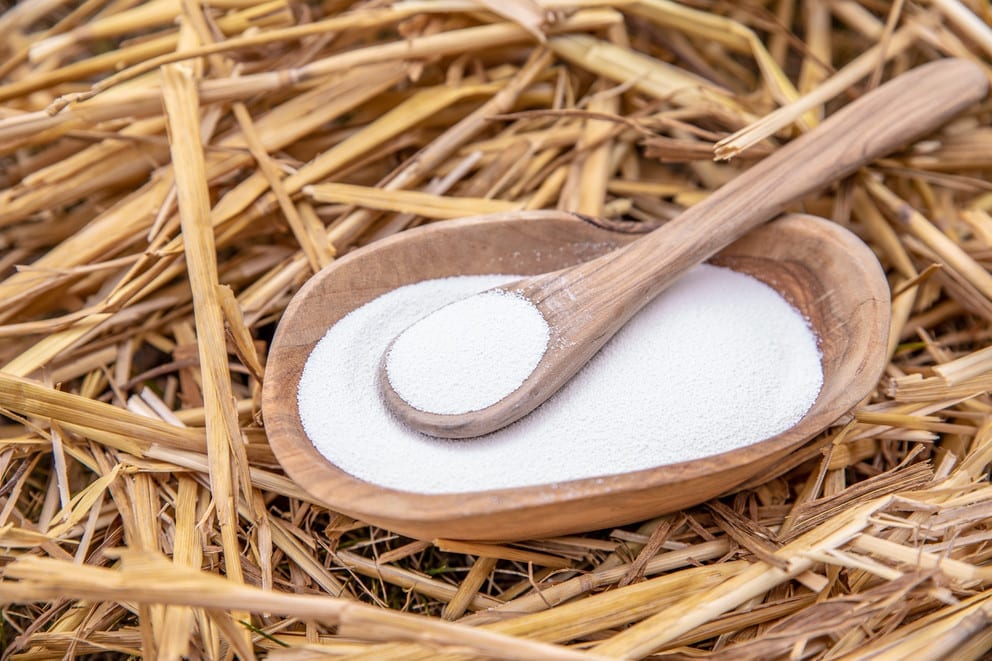via University of Miami
Enzymes are nature’s powerhouses. Found in the cells of all animals, plants, and every other living organism, they accelerate the chemical reactions that trigger thousands of biological functions—from forming neurons to digesting food.
They perform their jobs so selectively and so quickly—millions of times faster than a blink of the eye—that the field of biomimetic chemistry has emerged over the past few decades with the goal of designing artificial enzymes that can mimic the powers of natural enzymes in industrial settings. Artificial enzymes could, for example, convert corn into ethanol or help create new drugs more quickly, cheaply, and effectively.
Moving one step closer to achieving that goal, Rajeev Prabhakar, a computational chemist at the University of Miami, and his collaborators at the University of Michigan have created a novel, synthetic, three-stranded molecule that functions just like a natural metalloenzyme, or an enzyme that contains metal ions.
“It wasn’t clear that they could be made, but we made them. And, then we used them to successfully catalyze reactions,” said Prabhakar, a professor of chemistry who studies enzyme reactions in hopes of designing their artificial analogues. “This is an incremental but important step in the development of artificial enzymes, which has long been considered chemistry’s holy grail. Unfortunately, as good as natural enzymes work in our bodies and other life forms, they don’t tolerate other settings very well. They’re also very expensive and not easy to prepare and purify.”
For their groundbreaking study published in Nature Chemistry this week, Prabhakar and graduate student Vindi M. Jayasinghe-Arachchige joined forces with Vincent L. Pecoraro, a University of Michigan chemistry professor, to improve the performance of the artificial enzymes Pecoraro’s lab pioneered over the years. The Michigan researchers had previously created simpler synthetic metalloenzymes that successfully catalyzed a number of chemical reactions. But those artificial macromolecules were designed with three identical, or symmetrical “homotrimeric” strands, which, Prabhakar said, limited their catalytic abilities.
In the new molecule, which Jayasinghe-Arachchige designed on the University of Miami’s supercomputer with Prabhakar’s guidance, the third strand differs in structure from the other two strands. Her quantum mechanical calculations showed that the more complex, non-symmetrical, three-stranded structure, known as a “heterotrimeric” coil, expanded the catalytic performance of homotrimeric artificial metalloenzymes—a finding that Pecoraro and his team confirmed with experiments in his Michigan lab.
“Our techniques are different, but complimentary,” Prabhakar said. “What we do the Pecoraro group cannot do, and what they do, we cannot do. We model molecules on the computer so we can predict their structural properties and the mechanism of their formations. They use our models to build the real thing, and in this case that is the first example of a natural heterotrimeric molecule.”
Most lay people would probably find the study as incomprehensible as its title: “Heteromeric three-stranded coiled coils designed using a Pb(II)(Cys)3 template mediated strategy.” But the bottom line, Prabhakar said, is that the collaborative research conducted in Miami and Michigan opens the door to a new strategy for achieving the creation of artificial enzymes that work as well as natural enzymes.
In addition to Pecocaro, Prabhakar, and Jayasinghe-Arachchige, other co-authors of the study include Prabhakar’s former graduate student, Thomas J. Paul, now at the University of Michigan; Audrey E. Tolbert, Catherine S. Ervin, and Kosh P. Neupane, also from the University of Michigan; and Leela Ruckthong, from King Mongkut’s University of Technology, in Thailand.
Now in her last year of study for her doctorate in chemistry, Jayasinghe-Arachchige said she remains fascinated by the advances in computational chemistry techniques that allowed her to model the chemical structures and reactions of the new molecule.
“I’m excited that our findings will create new avenues toward the development of efficient artificial enzymes that can be used to enhance the quality of life,’’ said Jayasinghe-Arachchige, “and as a woman in a field where women are underrepresented, I hope this study will motivate women to join the fascinating world of STEM fields.”
The Latest Updates from Bing News & Google News
Go deeper with Bing News on:
Artificial enzymes
- Google DeepMind Unveils Next-Gen AI Drug Discovery Model
The third version of the "AlphaFold" AI model will help scientists target diseases and design new medications.
- Chemists produce new-to-nature enzyme containing boron
The study was presented in the journal Nature ("Boron catalysis in a designer enzyme"). University of Groningen chemists introduced an artificial amino acid containing boron in an enzyme.
- Google DeepMind debuts AlphaFold 3 model for predicting the structure of biomolecules
Google’s AlphaFold family of artificial intelligence models can significantly speed up the task by automating manual work for scientists. The first iteration of the model that the company debuted in ...
- Google Unveils AI-Powered Molecular Structure Predictor With Unprecedented Accuracy
Google's new artificial intelligence model ... have used earlier iterations to uncover information about cancer treatments, malaria vaccines, and enzyme architecture. (Photo by NELSON ALMEIDA/AFP via ...
- Emerging Legal Terrain: IP Risks from AI's Role In Drug Discovery
This article explores the benefits and risks of AI-driven drug discovery from the legal perspective. Since the law governing IP rights in AI-driven drug discovery is still in its infant state, any ...
Go deeper with Google Headlines on:
Artificial enzymes
[google_news title=”” keyword=”artificial enzymes” num_posts=”5″ blurb_length=”0″ show_thumb=”left”]
Go deeper with Bing News on:
Biomimetic chemistry
- RMIT Engineer Clinches George Whitby Award, First Australian to Earn ACS Recognition
Professor Namita Roy Choudhury, Head of Chemical & Environmental Engineering Department in the School of Engineering at RMIT, has become the first Australian to win the 2024 George Stafford Whitby ...
- chemistry hacks
On our travels round the hardware world we’ve encountered more than one group pursuing the goal of making their own silicon integrated circuits, and indeed we’ve seen [Sam Zeloof] producing ...
- New ways to strengthen biomimetic spider-silk
By using the same secret the researchers are able to create biomimetic spider-silk fibers in a non-toxic way. The study is published in Advanced Functional Materials. Spider silk is known for ...
- Department of Chemistry
The Department of Chemistry at Saint Louis University offers you the opportunity to not only earn a degree but also pursue research projects, use specialized equipment and get involved on campus. A ...
- Craig Bettenhausen, Associate Editor
Craig has an MA in Chemistry from Johns Hopkins University, where he studied thin-film solar cells and biomimetic synthetic inorganic chemistry, and a BS in Chemistry from Harding University ...
Go deeper with Google Headlines on:
Biomimetic chemistry
[google_news title=”” keyword=”biomimetic chemistry” num_posts=”5″ blurb_length=”0″ show_thumb=”left”]











